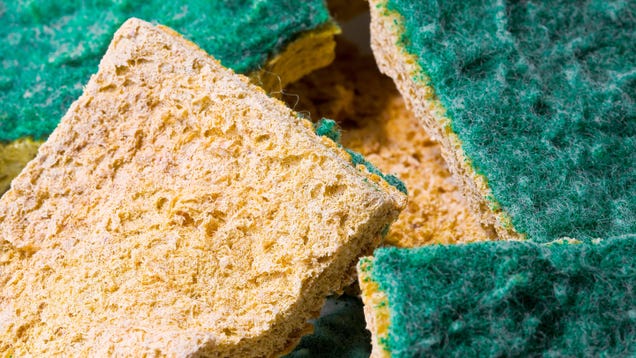For a seemingly humble cleaning supply, there has been a lot of discussion about sponges over the years; more specifically, how to clean or sanitize them. Various studies, like the one published in Nature’s Scientific Reports in 2017, found that kitchen sponges were teeming with bacteria—362 different types, to be exact—making them “the biggest reservoirs of active bacteria in the whole house,” including toilets.
But beyond the bacteria, sponges also tend to disintegrate and develop a foul odor with use. Fortunately, there’s a way to revive a worn-out sponge using a few pantry staples. Here’s what to know.
How to revive old sponges with salt
So, why salt? Table salt is hygroscopic, which means it attracts moisture from the atmosphere, and is also the reason it can become damp and clog salt shakers in humid weather.
According to an article in House Digest, salt can also draw moisture from a sponge, reducing the dampness that bacteria need to thrive, and, in turn, preventing the growth of mildew and mold, as well as that foul odor kitchen sponges develop over time. And that’s not all: Salt can make the sponge more efficient, absorbing oils and making it easier to tackle stains.
There are two simple ways to put salt to work on your sponges:
1. Saltwater soak
Rinse your sponge with warm water, then squeeze it out to get rid of any lingering crumbs or bits that may be sticking to it. Fill a container with warm water, and add 1/4 cup of salt (e.g. table salt, kosher salt, sea salt, etc). Stir the mixture until the salt is completely dissolved.
Next, place your sponge in the mixture, and make sure it’s fully submerged. Leave it there overnight, or at least for a few hours, then remove it, squeeze it out, and rinse it thoroughly with clean water.
2. Add some vinegar
This process is the same as the one described above, except the mixture consists of 1 cup hot water, ½ cup white vinegar, and 3 tablespoons salt.
To clarify, the aim of these methods is to get rid of (or at least lessen) odors, and help get the sponge back to looking more like it did when it was new. We didn’t come across any research indicating that this would sterilize your sponge, so when you’re done, you may want to pop it in the microwave.

Leave a Reply
You must be logged in to post a comment.